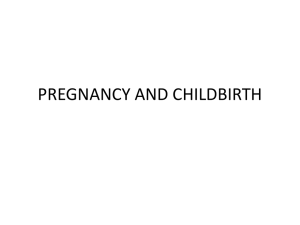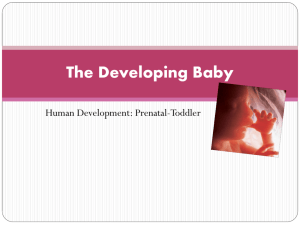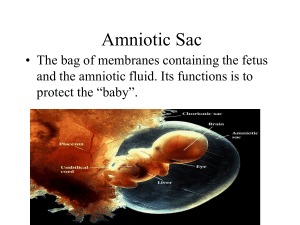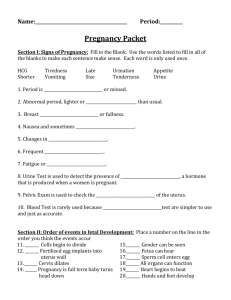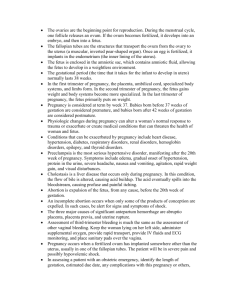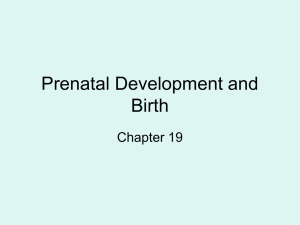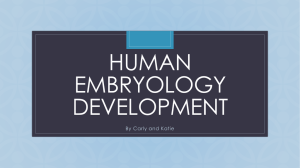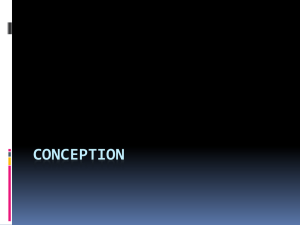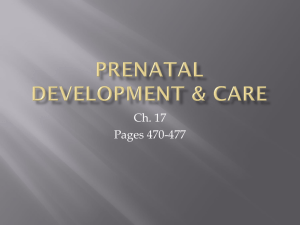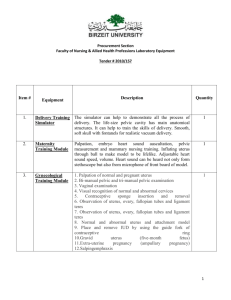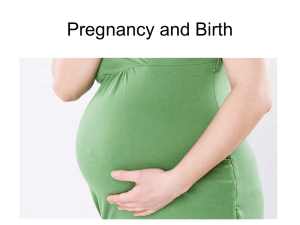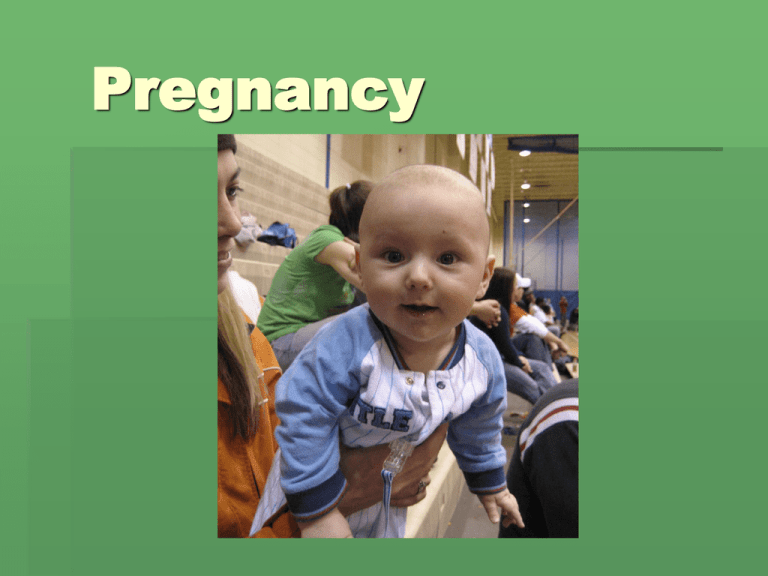
Pregnancy
Sexual Intercourse
The reproductive process in which the
penis is inserted into the vagina and
through which a new human life may
begin
Fertilization/Conception
The union of the egg and sperm that
takes place in the fallopian tubes
Zygote
The genetic material of the egg and
sperm combined to form one cell
Implantation
The attachment of the fertilized egg to
the uterus
The egg is now known as a blastocyte,
attaches to one of the walls in the upper
1/3 of the uterus
This happens within 3 to 5 days of
fertilization
Once implantation has happened a
women is said to be pregnant
Implantation
Embryo
The term for a developing pregnancy
from fertilization to the end of week eight
Endometrium
The lining of the uterus
Placenta
An organ that develops in the uterus during
pregnancy
The placenta provides nourishment and
oxygen to the growing baby and removes
waste
Some refer to it as the afterbirth because it is
excreted from the body following the birth of
the baby
Most substances are passed from the mother
through the placenta to the baby
Amniotic Fluid
The watery substance that surrounds the
growing fetus during its time in the womb
The fluid helps to cushion the baby from
outside force
Amniocentesis
A medical procedure used for
prenatal diagnosis, in which a
small amount of amniotic
fluid is extracted from the
amniotic fluid around a
developing fetus
It is usually offered when there may be an
increased risk for genetic defects in the
pregnancy.
Early amniocentesis can be performed as early as
13 weeks gestation
Standard amniocentesis is usually performed
between 15 and 20 weeks gestation
Ultrasound
used to visualize the embryo or fetus in its
mother's uterus (womb)
The procedure is often a standard part of
prenatal care, as it yields a variety of
information regarding the health of the mother
and of the fetus, as well as regarding the
progress of the pregnancy.
Umbilical Cord
A hollow rope-like tube that connects the
embryo to the placenta
The placenta carries nutrients and oxygen to
the baby and takes waste away
First Trimester
The 1st 14 weeks of pregnancy
The most important trimester because this is
when the vital structures are forming
The embryo develops all of its organs and
grows to about 1.5 inches
The heart, brain, lungs, eyes, arms, and legs
have formed – not all of them are fully
functional
The placenta and umbilical cord are also
formed during this time
Second Trimester
Months 4-6 of pregnancy
The organs continue to develop and
movement can be felt by month 4
The heartbeat can be heard
The fetus recognized voices and it grows
hair and nails
By the end of the 2nd trimester the fetus is
about 14-15 inches long and about 2
pounds
Third Trimester
Months 7-9 of pregnancy
The fetus gains most of its weight during
this trimester and is able to grasp objects
as well as open and close its eyes
Fetus
A developing human, from the start of the
ninth week of pregnancy until delivery
Labor/Natural Birth
the culmination of a human pregnancy with
the emergence of a newborn infant/s from
the mother's uterus.
Natural Birth which is most common is when
the baby is delivered through the vagina
First stage: contractions/dilation
Second stage: delivery
Third stage: placenta/afterbirth
Labor/Natural Birth
Breech Birth
refers to the position of the baby in the
uterus such that it will be delivered buttocks
first as opposed to the normal head first
position.
Caesarean Birth
A caesarean section or csection, is a form of childbirth
in which a surgical incision is
made through a mother's
abdomen and uterus to
deliver one or more babies
It is usually performed when
a vaginal delivery would put
the baby or mothers life at
risk, although in the last
decade it has been
performed upon request.
Vernix
Vernix is the waxy or
"cheesy" white
substance found
coating the skin of
newborn humans
Vernix is the Latin word
for "varnish." The
vernix (or "varnish"),
"varnishes" the baby.
Vernix is composed of
sebum (the oil of the
skin) and cells that
have sloughed off the
fetus' skin.
Fontanelle
Fontanelles are soft spots on
a baby's head which, during
birth, enable the soft bony
plates of the skull to flex,
allowing the head to pass
through the birth canal
Fontanelles are usually
completely hardened by a
child's second birthday, and
will eventually form the
sutures of the neurocranium.

